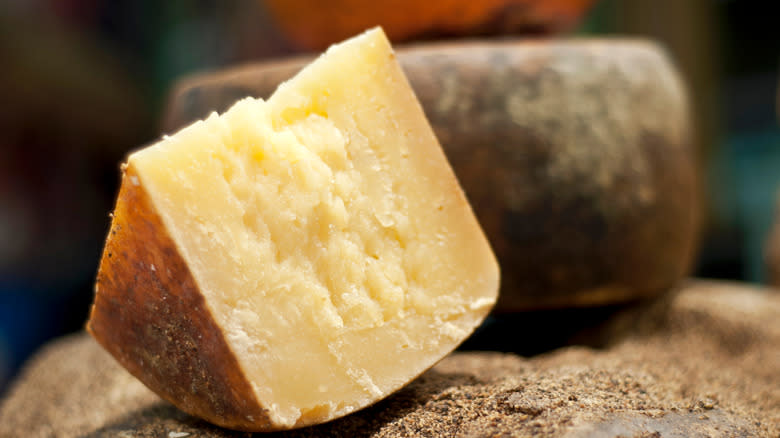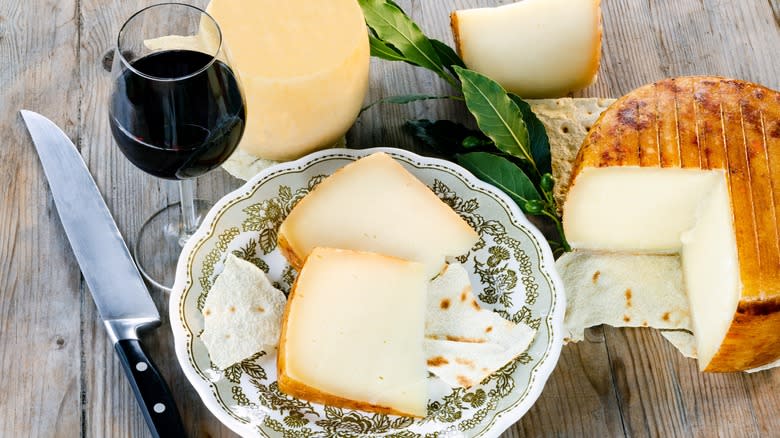The Historic Reason Sardinian Pecorino Cheese Became A Tuscan Specialty

Italy's cheese culture is world-famous for good reason. Beyond beloved parmesan, the country produces an astonishing 2,500 varieties of cheese, of which 34 have legally protected denominations. Such EU-regulated terminology preserves and honors the tradition of Italian cheesemakers.
Out of all these cheeses, few can boast the storied history of pecorino. The tangy sheep's milk cheese has been produced for nearly 2,000 years and has denomination protection in three provinces: one in Sardinia and two in Tuscany. The pecorino types differ between the two regions, each one boasting its unique palate defined by its land and methodologies.
And to add to the complexity, Sardinian-style pecorino is produced in Tuscany, too. In the 20th century, Sardinian shepherds migrated to the Tuscan region. Due to rapid industrialization, many Tuscan residents abandoned farmland in favor of city life. With the advent of new space for pasturing, Sardinians brought their sheep to the area, carrying pecorino-making traditions along with them. So, how did this new variety compare with the already-existing Tuscan cheese tradition? Let's dive into the details.
Read more: 13 Unexpected Ingredients To Elevate Lasagna
Sardinians Introduced New Pecorino Varieties To Tuscany

Pecorino is a complex cheese in both flavor and cultural breadth. As the largest producer, Sardinia is particularly known for its take on the cheese, with several variations on the island. However, other pecorino styles developed separately, such as in Lazzio -- the region surrounding Rome -- as well as Tuscany. It's unknown which pecorino arose first; while some claim Sardinia invented the style, Tuscan pecorino also traces to ancient origins.
Sardinian and Tuscan pecorino varieties differ due to several factors. Most prominently, Sardinian pecorino is made from the Sarda sheep, which lends the cheese a distinct character. Additionally, traditional Tuscan cheesemakers use vegetable rennet to curdle their milk, while Sardinians utilize animal-based enzymes. Plus, there are even more methodology variations with each distinct producer in how the cheese is refined, aged, and stored. So, untangling all the manners in how Sardinian cheese-making altered Tuscany's dairy landscape is impossible. All that's clear is the Sardinian migration added even more pecorino varieties into existence-- and that's something to celebrate.
Read the original article on Tasting Table.

